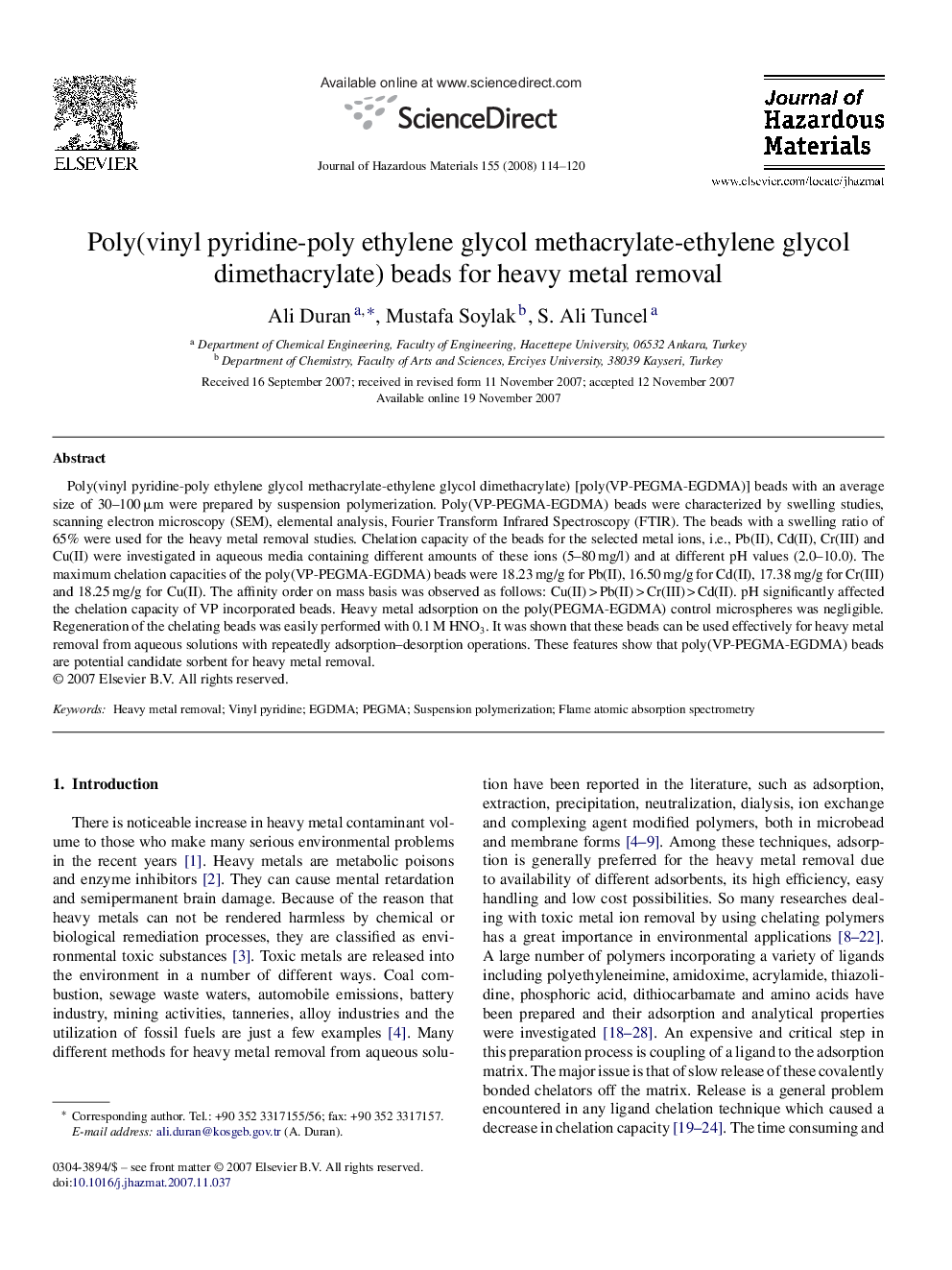| Article ID | Journal | Published Year | Pages | File Type |
|---|---|---|---|---|
| 583408 | Journal of Hazardous Materials | 2008 | 7 Pages |
Abstract
Poly(vinyl pyridine-poly ethylene glycol methacrylate-ethylene glycol dimethacrylate) [poly(VP-PEGMA-EGDMA)] beads with an average size of 30-100 μm were prepared by suspension polymerization. Poly(VP-PEGMA-EGDMA) beads were characterized by swelling studies, scanning electron microscopy (SEM), elemental analysis, Fourier Transform Infrared Spectroscopy (FTIR). The beads with a swelling ratio of 65% were used for the heavy metal removal studies. Chelation capacity of the beads for the selected metal ions, i.e., Pb(II), Cd(II), Cr(III) and Cu(II) were investigated in aqueous media containing different amounts of these ions (5-80 mg/l) and at different pH values (2.0-10.0). The maximum chelation capacities of the poly(VP-PEGMA-EGDMA) beads were 18.23 mg/g for Pb(II), 16.50 mg/g for Cd(II), 17.38 mg/g for Cr(III) and 18.25 mg/g for Cu(II). The affinity order on mass basis was observed as follows: Cu(II) > Pb(II) > Cr(III) > Cd(II). pH significantly affected the chelation capacity of VP incorporated beads. Heavy metal adsorption on the poly(PEGMA-EGDMA) control microspheres was negligible. Regeneration of the chelating beads was easily performed with 0.1 M HNO3. It was shown that these beads can be used effectively for heavy metal removal from aqueous solutions with repeatedly adsorption-desorption operations. These features show that poly(VP-PEGMA-EGDMA) beads are potential candidate sorbent for heavy metal removal.
Related Topics
Physical Sciences and Engineering
Chemical Engineering
Chemical Health and Safety
Authors
Ali Duran, Mustafa Soylak, S. Ali Tuncel,
